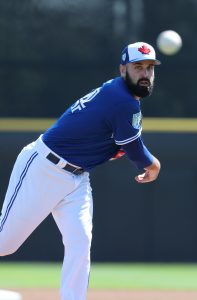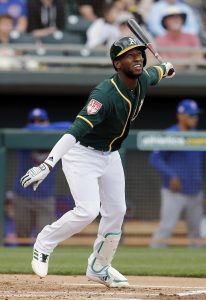This is the latest post of MLBTR’s annual Offseason in Review series, in which we take stock of every team’s winter dealings.
The Braves stuck to their valuations when it came to offseason trade and free agent targets and ultimately made only a few acquisitions, leaving the team largely reliant upon its abundant young talent as it seeks to repeat as division champion.
Major League Signings
- Josh Donaldson, 3B: one year, $23MM
- Nick Markakis, OF: one year, $6MM
- Brian McCann, C: one year, $2MM
- Total spend: $31MM
Trades And Claims
- Acquired OF Matt Joyce from Giants in exchange for cash considerations
- Acquired C Raffy Lopez from Padres in exchange for PTBNL or cash
Minor League Signings
Notable Losses
- Brad Brach, Lucas Duda, Peter Moylan (retired), Rene Rivera, Anibal Sanchez, Kurt Suzuki
[Atlanta Braves Depth Chart | Atlanta Braves Payroll Information]
Needs Addressed
Sometimes an offseason involves creative reshuffling, with multiple moves that reshape certain elements of a roster. Other times, you just see your holes and fill ’em up. It was decidedly the latter this time around for the Braves.
There was never any question that the Braves would be hanging onto their young core — including the better portion of their many excellent upper-level prospects. But it was possible to imagine any number of possibilities for GM Alex Anthopoulos and company after the team surprisingly won the National League East last year.
As it turned out, the Braves got their work in early and focused on short-term veterans. Two of those players are quite familiar to the Atlanta faithful. Former star catcher Brian McCann will come back home in a reserve role. He’s a solid veteran and could be a nice value, but there isn’t a ton of upside in the signing.
It’s much the same for outfielder Nick Markakis, who’ll fill the void created by his own departure. Though the Braves reportedly explored other options in right field, they watched several free agents go elsewhere and bypassed trade possibilities to re-up with Markakis. It was a nice price for a guy who won a Silver Slugger last year, but the payout also reflects the skepticism in the 35-year-old’s outlook from the rest of the market. Markakis has been a slightly above average hitter for most of his career and doesn’t seem terribly likely to be anything more than that in 2019.
If those moves prioritized floor over ceiling, the Braves chased the upside with their other signing. Josh Donaldson had been one of the game’s very best players before injuries intervened of late. He’s not particularly young, but isn’t over the hill at 33 years of age. Donaldson slashed 33 long balls with a 151 wRC+ in 2017, so it’s not as if his heyday is well in the rearview mirror.
Adding Donaldson was something of a splurge, in that the Braves had repeatedly given signals they were content with Johan Camargo at third base and also have top prospect Austin Riley waiting in the wings. But it was precisely the kind of move that made sense for a club in this situation. The Braves had ample payroll availability to work with now but were wary of committing too much future spending capacity. They wanted to win now while preserving their long-term contention window. The club has the pieces in place to cover if Donaldson experiences health problems, but was also well-situated to benefit from a premium talent at the hot corner.
Other than that, it was mostly crickets from the Atlanta organization. They brought in veterans Josh Tomlin and Matt Joyce at the tail end of camp to fill out the roster, but there’s no real commitment to either player. That it even proved necessary to grab these sorts of players at the last minute is itself a source of frustration for some fans — and a reflection of the generally cautious approach the Braves ended up taking to outside acquisitions this winter.
Questions Remaining
The Braves are an up-and-coming team that has already arrived. Why, then, is there so much hand-wringing in Atlanta as the season gets underway?
In no small part, it seems to be something of a public relations miscalculation. Many fans have heard all about the Liberty Media overlords. They’re primed for payroll disappointment, familiar with non-committal executive lingo. So when they hear talk about the team’s ability to “shop in any aisle” and are told “there’s no single player that [the team] can’t afford,” they sense a loosening of the pocketbook strings. When they’re told “the payroll will go up for the current year,” they don’t stop to ask whether that means hypothetical spending capacity or actual cash owed on Opening Day; rather, they begin to wonder, “how high?”
The Braves payroll to start the year will actually sit just below the levels carried in the prior two years. While the club says it’s still got more to work with in the middle of the season, that’ll only be deployed if it’s deemed to be warranted. Three division rivals set their sights on mounting challenges, making significant new roster additions to strong existing talent bases. The Braves also clutched onto their many talented, upper-level pitchers when some might have been cashed in to deliver more immediate upgrades. It seems fair to say there’s some risk in the wait-and-see strategy, though it also offers some obvious advantages in preserving resources to address those needs that arise.
The wisdom of hanging onto resources, rather than using them to facilitate bigger acquisitions or patch up issues that have already cropped up, will be tested early. That’s true especially of the pitching staff. There’s loads of talent in Atlanta, but that’s not fully reflected on the current roster. And for every bit of upside, there’s a downside scenario to match.
There’s something symbolic in the fact that Julio Teheran took the ball on Opening Day for the sixth-straight time. For all his positive moments, there were many that believed he ought to be sent out this winter in favor of higher-upside arms. He’s joined by Sean Newcomb, who hasn’t proven capable of taking the next step in the majors, and talented but totally unproven youngsters Bryse Wilson and Kyle Wright — neither of whom seemed to have much of a chance at all of earning a MLB job when camp opened. Mike Foltynewicz and Kevin Gausman are on the DL to begin the year; both also need to prove their successes in Atlanta last year can be sustained. Touki Toussaint, Kolby Allard and others are waiting for their chance to show they deserve permanent jobs; Mike Soroka and perhaps Luiz Gohara will join them in that pursuit if they can get to full health. There are yet more fascinating hurlers lurking from outside the 40-man roster. It’s quite an assemblage of talent, it’s just impossible to tell who’ll end up taking the bulk of the starts and how it’ll all work out.
It was a bit surprising that the Braves weren’t able to condense some of those young players into a high-end starter — a seemingly never-ending, never-fulfilled pursuit for the organization. But it’s also not clear what the possibilities were, and it’s understandable that they were not willing to sell short on their talent for an arm they didn’t believe in.
The lack of action was a bit tougher to understand in the bullpen, though. Injuries struck there as well, with A.J. Minter and Darren O’Day hitting the shelf. The rotation issues also drew away some options, though Max Fried still ended up being stashed in the pen rather than stretched out at Triple-A. There are some good young arms in the mix, and the Braves didn’t exactly need to replace anyone when you look at their full-health unit, but it still might have made sense to commit some cash to bring in a veteran. Luke Jackson and Josh Tomlin are in the pen to begin the year, which hardly seems optimal.
Things seem to be in sturdier shape on the position-player side. The infield, in particular, is a sensibly constructed unit that includes nice flexibility and upside. The big question there is whether Dansby Swanson will advance with the bat. And the team would obviously look better with J.T. Realmuto taking the majority of the time behind the dish, rather than a timeshare between McCann and Tyler Flowers. But there’s a huge ceiling with Donaldson and Freddie Freeman on the corners and Ozzie Albies installed at second.
There does seem to be a missed opportunity in the outfield, however. Solid as he has been, Markakis is hardly an inspiring choice. A run at Bryce Harper was never realistic, but the Braves were ultimately unwilling to go past their valuations on veterans Andrew McCutchen and Michael Brantley — not stars, at this stage, but younger and with better outlooks at the plate than Markakis. The most intriguing possibility all along was on the trade side, with Mitch Haniger representing a particularly appealing target. But he was never really made available — or, the Braves and others didn’t dangle enough to interest Seattle GM Jerry Dipoto. There was some chatter on a few other players, but nothing ever seemed to get very serious.
As it turns out, the Braves will open the year with a curious outfield mix at the MLB level. The veteran Joyce is now backing up Markakis, center fielder Ender Inciarte, and uber-talented youngster Ronald Acuna. Only Acuna hits from the right side; he’s also the least likely player to ride the pine on any given day. Charlie Culberson offers a righty bat with some corner outfield experience, but he’s a marginal hitter historically. The Braves are paying Adam Duvall $2,875,000 to try to figure things out at Triple-A. It still feels like there could be some further moves to sort this situation out. Padres outfielder Hunter Renfroe may be facing a bit of a roster crunch early and could be a fit if the teams are willing to strike an early-season deal. Anthopoulos could still look at some waiver options or other low-risk bench moves to get a righty outfield bat on the team.
2019 Outlook
Since we’re mostly analyzing moves (there weren’t many) and then looking at questions (there are quite a few), the above analysis could come off as overly negative. The fact is, the Braves have loads of fascinating players and are just about as likely as any of their three primary division rivals to win the division or take a Wild Card spot. But there was a clear choice here to preserve both mid-2019 and future assets (of the payroll and prospect varieties) rather than to ramp up the roster for the immediate season. There are reasons for that decision, to be sure, but it also increases the risk and is subject to critique.
How would you grade the Braves’ offseason? (Link for app users.)

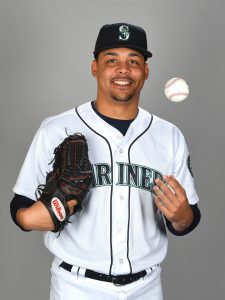
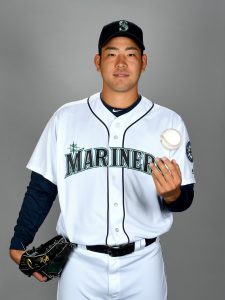
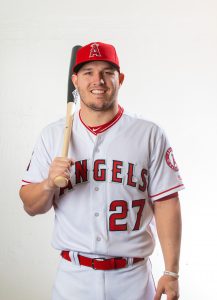
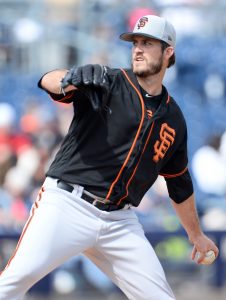 There’s more of an injury concern in regards to new arrival
There’s more of an injury concern in regards to new arrival 